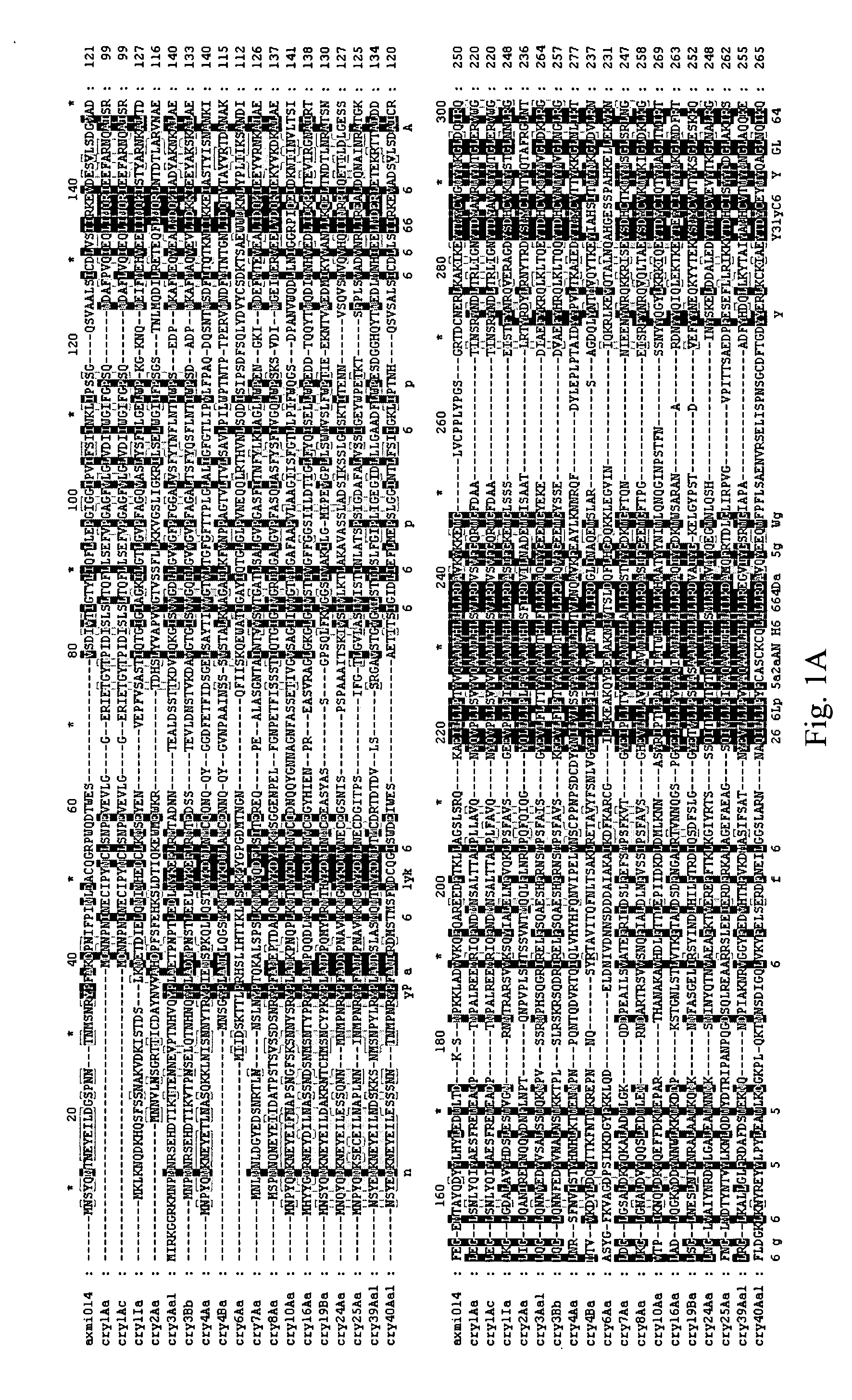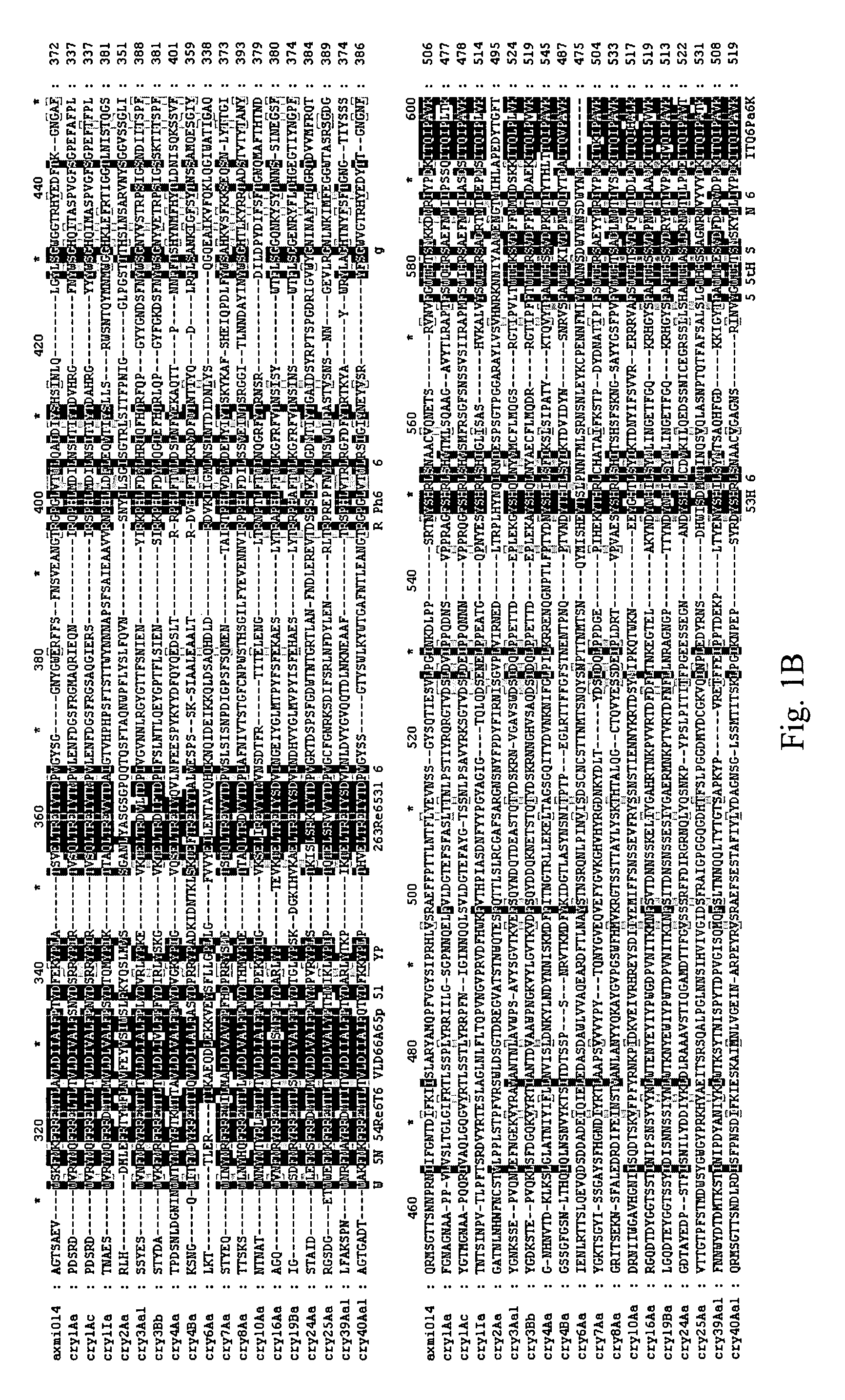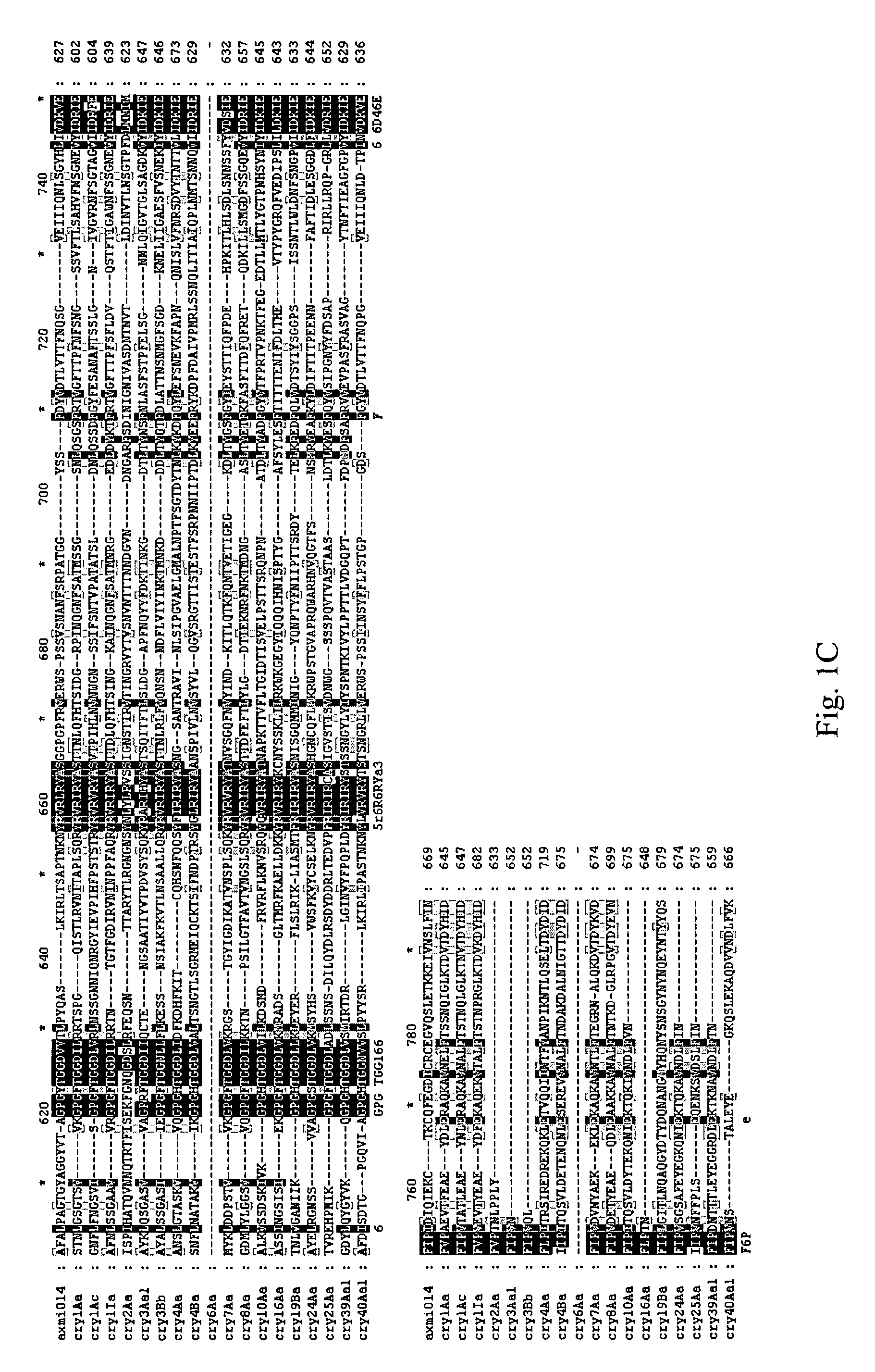AXMI-014, delta-endotoxin gene and methods for its use
a technology of deltaendotoxin and gene, applied in the field of axmi-014, deltaendotoxin gene and methods for its use, can solve problems such as larval death
- Summary
- Abstract
- Description
- Claims
- Application Information
AI Technical Summary
Benefits of technology
Problems solved by technology
Method used
Image
Examples
example 1
[0087] A pure culture of strain ATX13002 was grown in large quantities of rich media. The culture was spun to harvest the cell pellet. The cell pellet was then prepared by treatment with SDS by methods known in the art, resulting in breakage of the cell wall and release of DNA. Proteins and large genomic DNA was then precipitated by a high salt concentration. The plasmid DNA was then precipitated by standard ethanol precipitation. The plasmid DNA was separated from any remaining chromosomal DNA by high-speed centrifugation through a cesium chloride gradient. The DNA was visualized in the gradient by UV light and the band of lower density (i.e., the lower band) was extracted using a syringe. This band contained the plasmid DNA from strain ATX 13002. The quality of the DNA was checked by visualization on an agarose gel by methods known in the art.
example 2
Cloning of Genes
[0088] The purified plasmid DNA was sheared into 5-10 kb sized fragments and the 5' and 3' single stranded overhangs repaired using T4 DNA polymerase and Klenow fragment in the presence of all four dNTPs, as known in the art. Phosphates were then attached to the 5' ends by treatment with T4 polynucleotide kinase, as known in the art. The repaired DNA fragments were then ligated overnight into a standard high copy vector (i.e. pBluescript SK+), suitably prepared to accept the inserts as known in the art (for example by digestion with a restriction enzyme producing blunt ends).
[0089] The quality of the library was analyzed by digesting a subset of clones with a restriction enzyme known to have a cleavage site flanking the cloning site. A high percentage of clones were determined to contain inserts, with an average insert size of 5-6 kb.
example 3
High Throughput Sequencing of Library Plates
[0090] Once the shotgun library quality was checked and confirmed, colonies were grown in a rich broth in 2 ml 96-well blocks overnight at 37.degree. C. at a shaking speed of 350 rpm. The blocks were spun to harvest the cells to the bottom of the block. The blocks were then prepared by standard alkaline lysis prep in a high throughput format.
[0091] The end sequences of clones from this library were then determined for a large number of clones from each block in the following way: The DNA sequence of each clone chosen for analysis was determined using the fluorescent dye terminator sequencing technique (Applied Biosystems) and standard primers flanking each side of the cloning site. Once the reactions had been carried out in the thermocycler, the DNA was precipitated using standard ethanol precipitation. The DNA was resuspended in water and loaded onto a capillary sequencing machine. Each library plate of DNA was sequenced from either end o...
PUM
| Property | Measurement | Unit |
|---|---|---|
| temperature | aaaaa | aaaaa |
| temperature | aaaaa | aaaaa |
| pH | aaaaa | aaaaa |
Abstract
Description
Claims
Application Information
 Login to View More
Login to View More - R&D
- Intellectual Property
- Life Sciences
- Materials
- Tech Scout
- Unparalleled Data Quality
- Higher Quality Content
- 60% Fewer Hallucinations
Browse by: Latest US Patents, China's latest patents, Technical Efficacy Thesaurus, Application Domain, Technology Topic, Popular Technical Reports.
© 2025 PatSnap. All rights reserved.Legal|Privacy policy|Modern Slavery Act Transparency Statement|Sitemap|About US| Contact US: help@patsnap.com



